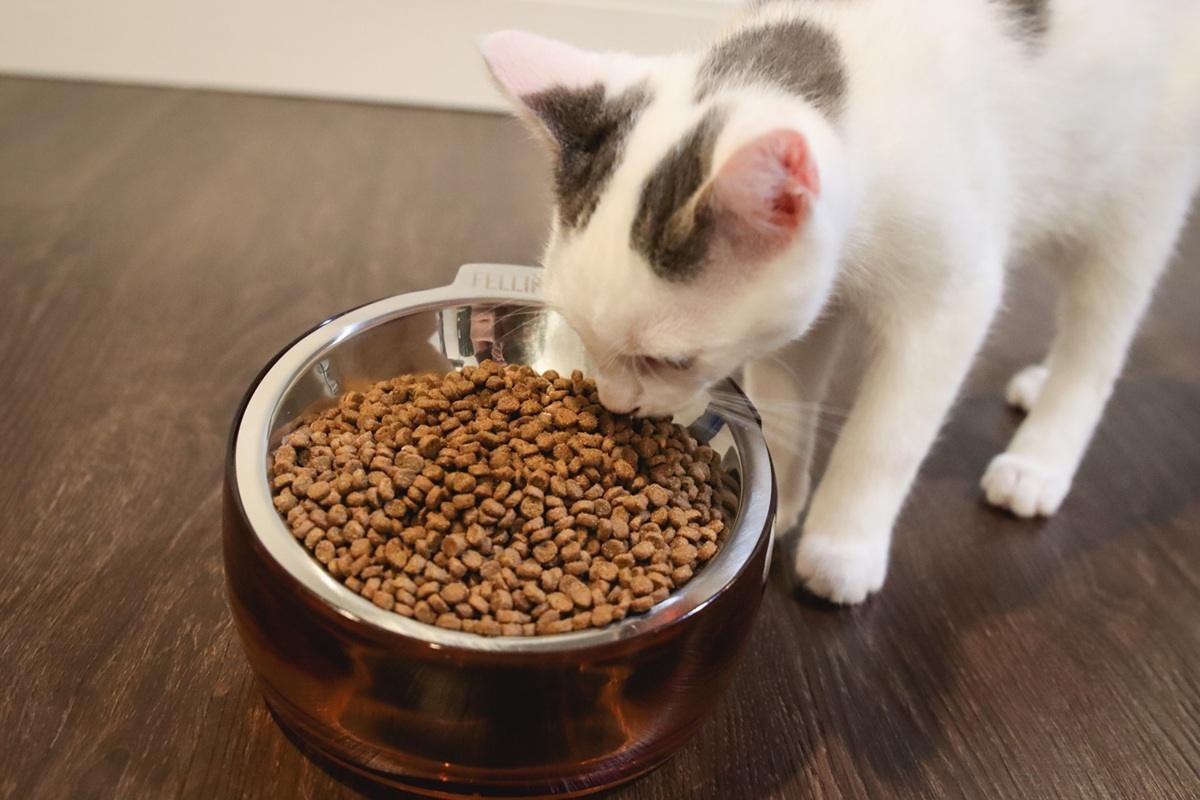Bringing a kitten into your home is an exciting time, filled with cuddles and playful antics. Ensuring your new furry friend receives the proper nutrition is crucial for their healthy development. One of the first questions many new cat owners ask is, “When Can A Cat Eat Dry Food?” This guide will walk you through the process of introducing dry food to your kitten, ensuring a smooth and healthy transition.
Understanding Kitten Nutritional Needs
Kittens have unique nutritional requirements that differ significantly from adult cats. They need a diet rich in protein, fats, and essential amino acids to support their rapid growth and development. Unlike adult cats, kittens require more calories per pound of body weight to fuel their boundless energy.
Kitten food, whether wet or dry, is specifically formulated to meet these needs. These formulas typically contain higher levels of protein and fat, along with essential nutrients like taurine and DHA, which are crucial for brain and eye development.
Introducing Dry Food: A Timeline
So, when can you introduce dry food to your kitten? Here’s a general timeline:
- 0-4 Weeks: During the first four weeks of life, kittens should ideally receive all their nutrition from their mother’s milk. Mother’s milk provides colostrum, which is packed with antibodies that support the kitten’s developing immune system. If the kitten is orphaned or separated from its mother, kitten-specific formula should be bottle-fed according to the directions on the packaging. Cow’s milk is not an acceptable substitute.
- 4-5 Weeks: At around four weeks of age, you can start introducing small amounts of wet kitten food mixed with kitten formula or water to create a gruel. This helps them get used to solid food and different textures.
- 5-6 Weeks: This is when you can begin introducing dry food. Start by mixing a small amount of dry food with the wet food mixture. You can also moisten the dry food with warm water or kitten formula to soften it and make it easier for your kitten to chew.
- 6-8 Weeks: As your kitten approaches 6-8 weeks of age, gradually increase the proportion of dry food in their diet while reducing the amount of wet food. By this point, most kittens should be able to eat dry kibble without difficulty.
Tips for a Smooth Transition to Dry Food
Introducing dry food to your kitten requires patience and a gradual approach. Here are some tips to help make the transition smoother:
- Choose a High-Quality Kitten Food: Look for dry food specifically formulated for kittens. Check the ingredient list to ensure it contains high-quality protein sources and essential nutrients.
- Soften the Kibble: In the early stages of introducing dry food, soften the kibble with warm water or kitten formula. This makes it easier for your kitten to chew and digest.
- Mix Wet and Dry Food: Gradually mix increasing amounts of dry food with wet food to help your kitten adjust to the new texture and taste.
- Offer Food Frequently: Kittens have small stomachs and require frequent meals throughout the day. Offer small portions of food several times a day to ensure they are getting enough calories.
- Provide Fresh Water: Always ensure your kitten has access to fresh, clean water.
Wet vs. Dry Food: What’s Best for Your Kitten?
Both wet and dry food have their own advantages and disadvantages for kittens.
- Wet Food: Wet food is generally more palatable and easier for young kittens to eat. It also has a higher moisture content, which can help prevent dehydration.
- Dry Food: Dry food is more convenient to store and can be left out for longer periods of time, allowing kittens to graze throughout the day. It can also help promote dental health by reducing tartar buildup.
Ultimately, the best option depends on your kitten’s individual preferences and needs. Some owners choose to feed a combination of wet and dry food to provide their kittens with the benefits of both.
Is Dry Food Alone Okay for Kittens?
Yes, once your kitten is able to chew and digest dry kibble without any difficulty, it is perfectly acceptable to feed them solely dry kitten food, provided it is a high-quality formula designed to meet their specific nutritional needs. The key is to choose a kitten food that is rich in protein, fats, and essential nutrients, and to ensure your kitten is eating enough to support their growth and development.
Monitoring Your Kitten’s Growth and Health
As you transition your kitten to dry food, it’s important to monitor their growth and overall health. Regular weigh-ins can help you ensure they are gaining weight at a healthy rate. You should also observe their stool consistency and appetite. If you notice any changes in their health or behavior, consult with your veterinarian.
Conclusion
Knowing when a cat can eat dry food is essential for ensuring your kitten receives the proper nutrition during their critical growth period. By following the guidelines and tips outlined in this guide, you can confidently introduce dry food to your kitten’s diet and help them thrive into a happy, healthy adult cat. Remember to always consult with your veterinarian if you have any concerns about your kitten’s health or diet.
